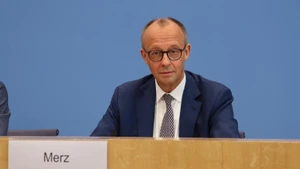The lack of qualified and skilled workers has become an urgent problem in the German economy. According to a forecast by the German Federal Employment Agency, Germany may lack about 7 million workers by 2035. Domestic workers alone will not be able to make up for the shortfall.
The economic downturn and the ageing population are also the reasons that push Germany to increase the recruitment of labourers from abroad, to meet the requirements of economic activities.
The German Federal Government has agreed on key points in a new draft immigration law, which is expected to be enacted in 2023. It makes it easier for skilled workers to work in Germany.
The Federal Ministry of the Interior of Germany introduced a plan with many changes, towards easing the conditions for German citizenship, to make Germany an attractive country for skilled migrant workers.
For example, the minimum time of residing for a migrant worker in Germany to apply for German citizenship has been shortened from 8 years to 5 years.
Children born in Germany to foreign parents would automatically be granted citizenship if one parent has had legal residence in Germany for five years.
In some cases, if immigrants fully meet the special integration requirements, it is possible to apply for German citizenship, after only 3 years of residence.
In addition, based on the scoring system, highly skilled workers who do not have any labour contracts are still allowed to immigrate, if they meet some selection criteria in terms of language skills, training qualifications or professional experience.
The new rules will be also applied to students and foreigners studying in Germany. The German government even intends to allow workers with long-term residence in the country to have full rights of voting and stand for election as citizens of the host country.
Despite gradual recovery from the COVID-19 pandemic, the Canadian economy has faced a series of challenges such as high inflation and a risk of recession, causing the escalation of the cost of living.
Businesses in Canada are facing the worst labour crisis on record, with nearly 1 million open job vacancies. The labour shortage was recorded in all fields, from healthcare, transportation, and construction, to information technology.
Meanwhile, according to a census in Canada, about 14% of the country's population is between the ages of 55 and 64, meaning a large number of the population is entering retirement age.
Minister of Immigration, Refugees and Citizenship of Canada, has announced a new plan, aiming to welcome 465,000 migrant workers by 2023. This figure will increase to 485,000 by 2024 and 500,000 by 2025.
This is part of a plan to address severe labour shortages and respond to an ageing population while attracting immigrants to rural communities in Canada.
The move by the governments of Germany and Canada to relax immigration regulations has been positively responded to by the business community and society.
The Association of German Chambers of Commerce and Industry welcomed and called for more action to attract highly skilled workers to Germany. The Business Council of Canada also valued the government's plan to increase the number of foreigners coming to settle down.
The majority of Canadians have supported the policy of attracting immigrants. The Environics Institute’s poll found that nearly 70% of Canadians said they are comfortable with current immigration levels and are used to living in diverse communities.
Chairman of Technology Finland Jaakko Eskola, said without enough workers of working age, social benefits would not be maintained, so the only viable option is to significantly increase the number of foreign workers. Accordingly, governments need to develop a stable and long-term immigration policy.
















